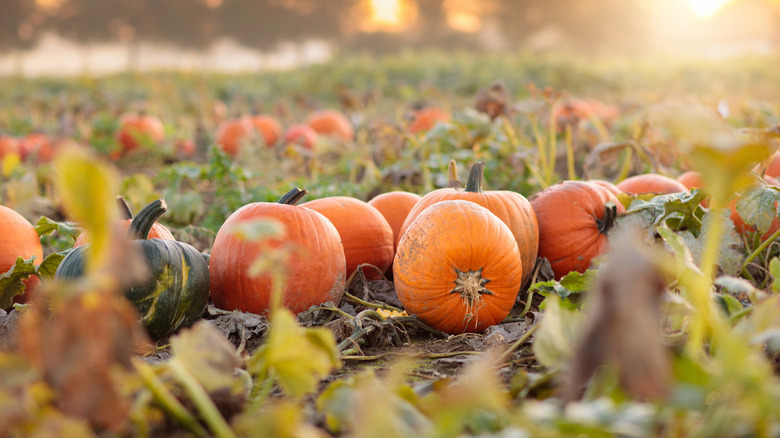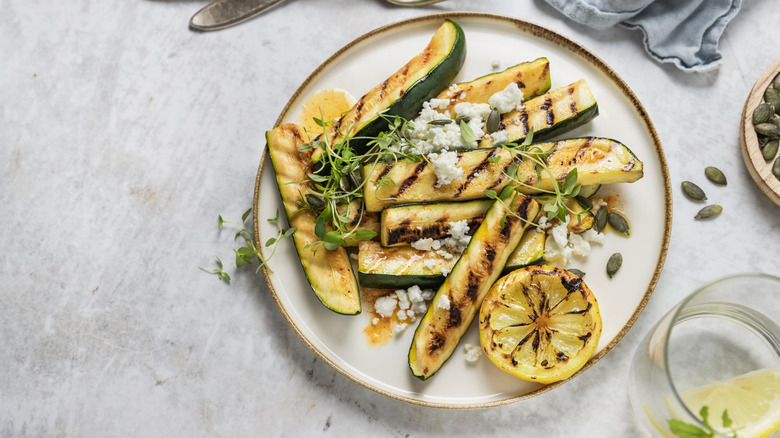What Is A Summer Squash And What Makes It Different From Pumpkins?
If you've ever been puzzled by the wide use of the term squash, you're not alone. There are many popular types of squash, but most varieties of the squash family fall under two categories, either summer or winter squash. Deep green zucchini is a summer squash, along with plenty of other yellow to green-hued varieties like pattypan, yellow, zephyr, and crookneck squash. Similar to butternut, acorn, kabocha, and spaghetti squash, pumpkin is a winter squash. Winter squashes mature and are ready to eat in the fall and winter seasons, while summer squash grow abundantly in the summertime and are usually at their peak from June to August.
Summer squash have a delicate, soft outer skin that's easily pierced if you're not gentle with it, along with a softer, more tender flesh inside. Summer squash can be eaten raw or cooked due to their light and spongy interior, and the almost translucent, watery seeds embedded in the center of the flesh are usually small and thin enough to go unnoticed. Due to their more fragile skin, summer squash have a much shorter shelf life than winter squash and are usually refrigerated to keep them fresh for longer. Summer squash are perfect for grilling as they cook quickly but are still able to develop nice charring from the heat of the grill, while the insides become soft and buttery. Summer squash are great for marinating, as their porous interiors absorb flavors easily, but we recommend salting them like you would raw eggplant before cooking or marinating so that they can expel some of their moisture.
With squash, it all comes down to seasonality
Winter squash, on the other hand, have a much tougher outer rind that's usually either inedible or unpleasant to eat, with the exception of delicata squash. The inner flesh is more robust and firm as well and needs to be cooked to soften up and become enjoyable to eat. Due to their thick skins and hard flesh, roasting or steaming is usually a great way to cook pumpkin and other winter squash, and they can be marinated after cooking, but trying to marinate winter squash before cooking doesn't yield much flavor. Winter squash have harder seeds that gather in the hollow of the squash and are usually scooped out before cooking, but the seeds can be toasted to deliciousness. Pepitas, the hulled version of pumpkin seeds, are a popular example of this.
In our modern grocery store environment, you're usually able to find zucchini available year-round, however, it will likely lack flavor, and the texture will suffer in the colder months of the year. Similarly, pumpkins or spaghetti squash found in a supermarket in the spring and summer months are likely to be subpar as well, so we recommend sticking with the appropriate seasons to consume squash. In hotter months, utilize our favorite sweet and savory summer squash recipes. When the temperatures start to drop and the leaves turn, look for pumpkins and other squash to cook in the fall.

